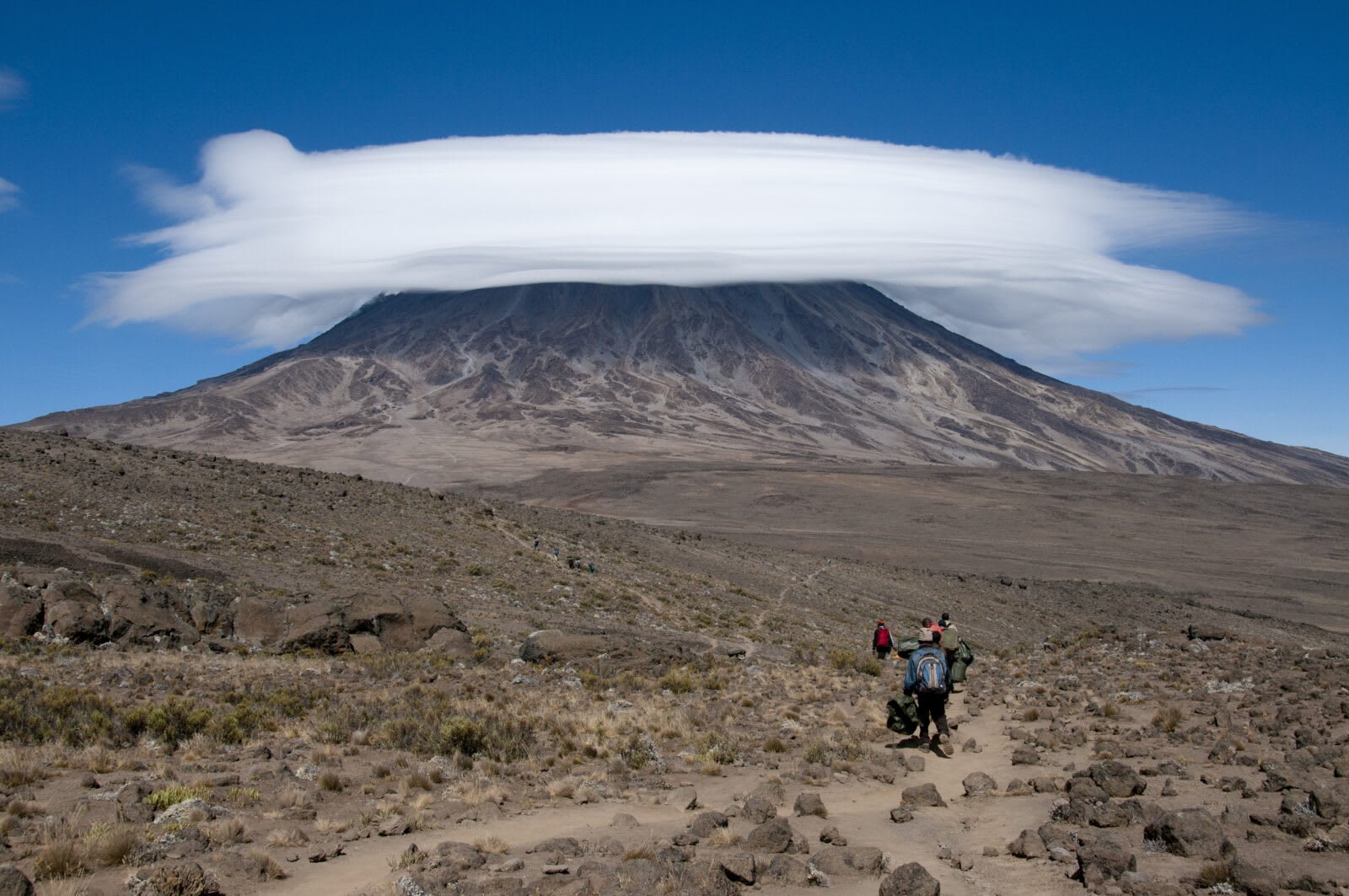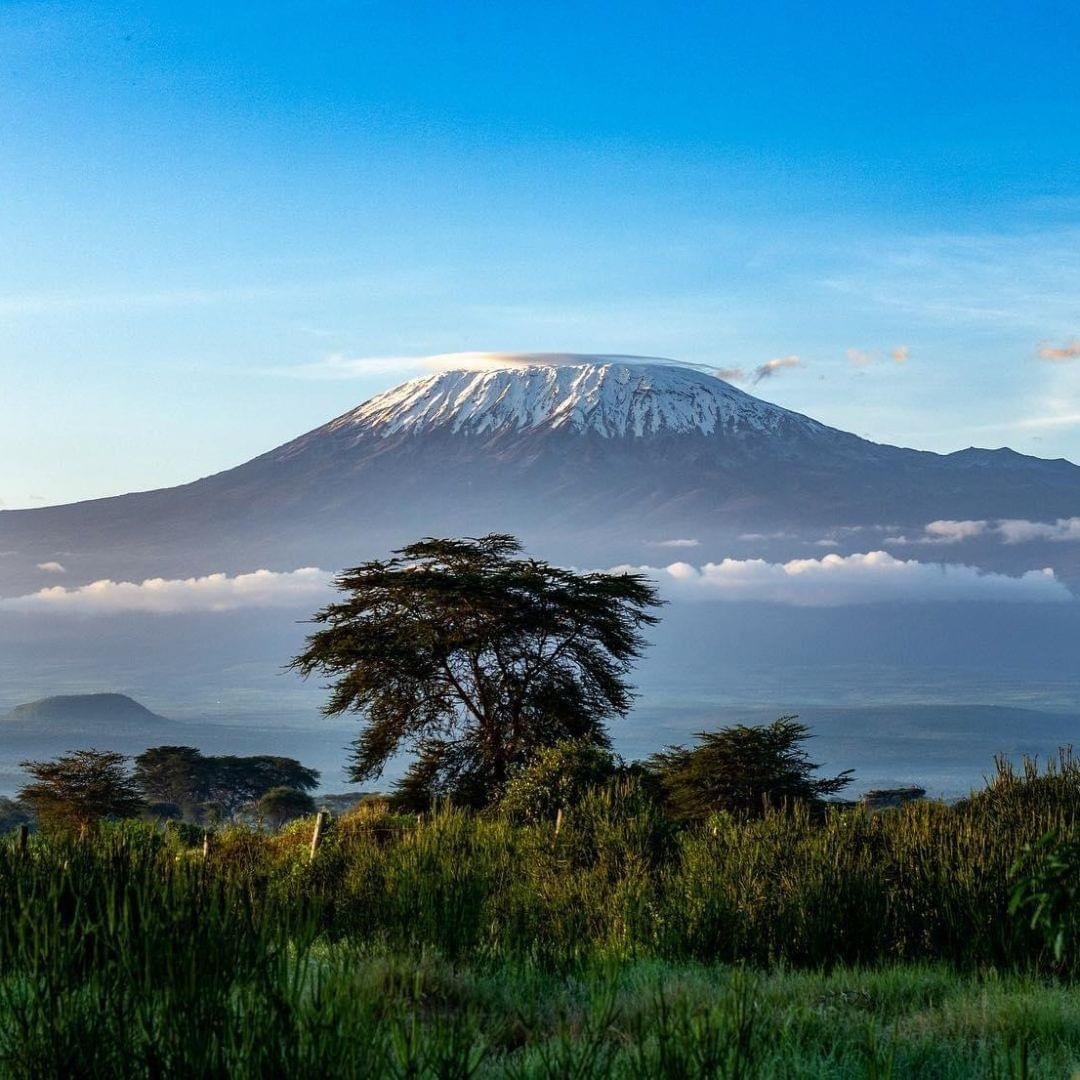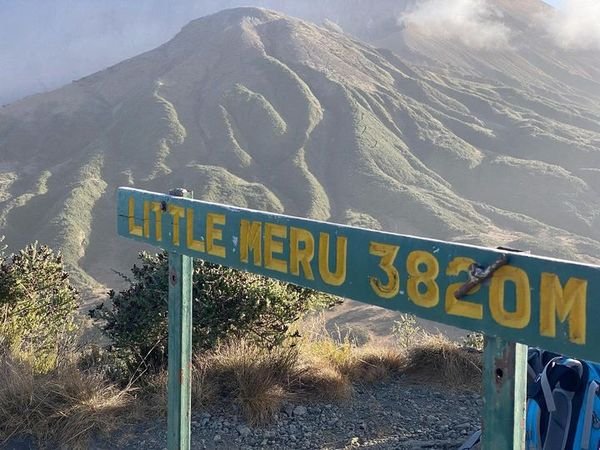The 10 Highest Mountain in Africa
Discover all of the tallest mountains across the continent.
Interested in the highest mountains in Africa? It’s a well-known fact that Mount Kilimanjaro is the highest mountain in Africa… but what about Africa’s other large mountains?
There are dozens of mountain ranges in Africa, from the Atlas Mountains in Morocco to the Drakensberg Mountains in South Africa. Africa also has some of the oldest mountains anywhere – the Barberton Greenstone Belt in South Africa is believed to be the oldest mountain range in the world, dating back around 3.6 billion years.
The list below shows the ten tallest mountains in Africa, along with the country or countries they’re located and their highest peak name and elevation in meters. Some of the mountains listed have more peaks than others, but we haven't included these to keep the list simple. For example, Mount Kilimanjaro has a second peak, Mawenzi, which at 5,148 meters is the third highest peak in Africa, but we’ve only included Kibo, Mount Kilimanjaro’s highest peak (and, of course, the highest peak in Africa).
Another note about this list of Africa’s highest mountains is that in the Ethiopian Highlands, there are several peaks (Tullua Dimtu, Ancua, and Kidus Yared) where surveyance is not robust, and heights on maps can differ by up to 500 meters. For this reason, we’ve only included the Rash Dashen peak.
So, with these caveats in mind, here is our list of the ten highest mountains in Africa:
#1. MOUNT KILIMANJARO, TANZANIA
Kibo Peak, 5,895 meters
Situated in Northern Tanzania close to the Kenya border, Mount Kilimanjaro – also known as ‘the roof of Africa’ or simply as ‘Kili’ – is the tallest mountain in Africa and the highest freestanding mountain in the world, with a summit of about 4,900 meters from its base. Kibo Peak, at the top of Kilimanjaro, is the highest point in Africa.
This tallest mountain in Africa is a near-perfect cone 40 kilometers across, reaching almost six kilometers to the sky from sea level. The East African mountain is actually made up of three volcanic cones – Kibo, Mawenzi, and Shira, and because of its shape and ease of summiting, around 50,000 visitors attempt to reach its peak each year.
#2. MOUNT KENYA, KENYA
Bastian Peak, 5,199 metres
Mount Kenya is the second-highest in Africa and Kenya’s highest peak. This extinct volcano is in the middle of the country, in Kenya National Park. The pristine wilderness surrounding this World Heritage Site is truly stunning, with lakes, glaciers, dense forests, mineral springs, and a broad range of African wildlife.
Referred to as the ‘Place of Light,’ Mount Kenya has three summits – Batian, Nelion, and Lenana, the highest of which is 5,199 meters. Like Mount Kilimanjaro, it’s possible for inexperienced climbers to summit Mount Kenya, and a range of guided trek options are available.
#3. MOUNT STANLEY, UGANDA AND DEMOCRATIC REPUBLIC OF CONGO
Margherita peak, 5,109 meters
The third largest mountain in Africa is UNESCO World Heritage Site Mount Stanley, located in the vast Central African Ruwenzori Range which forms the border between the Democratic Republic of Congo and Uganda. The mountain consists of two twin summits and several lower peaks, and, like Mount Kilimanjaro and Mount Kenya, is high enough to support glaciers.
#4. MOUNT MERU, TANZANIA
Socialist peak, 4,562 meters
Tanzania’s second-highest mountain, Mount Meru, is 60 kilometers west of Mount Kilimanjaro and surrounded by the safari hot spot Arusha National Park. The lower slopes rising from the savanna are fertile forests, home to abundant wildlife, including leopards, monkeys, and over 400 bird species.
The mountain is actually a dormant volcano, and because of its lower height and similar shape, many people use it as a warm-up before attempting to summit Mount Kilimanjaro.
#5. MOUNT SEMIEN, ETHIOPIA
Ras Dashen Peak, 4,550 meters
In the Horn of Africa lie the Ethiopian Highlands – a range of rugged mountains that form the largest elevated area in the continent, stretching across Ethiopia and Eritrea and cut in two by the Great Rift Valley.
The Western Highlands range from heights of 1,500 meters up to 4,550 meters at the Ras Dashen peak in the Semien Mountains, part of which has been designated the Simien Mountains National Park. At lower elevations, the highlands are made up of agriculturally productive and densely populated tropical savannas and grasslands, while the craggy and isolated higher elevations are home to large amounts of native wildlife and birds.
#6. MOUNT KARISIMBI, DEMOCRATIC REPUBLIC OF CONGO AND RWANDA
Mount Karisimbi, 4,507 meters
At 4,507 meters, Mount Karisimbi is the tallest mountain of the eight volcano chains in the Virunga Mountains, on the border between Rwanda and the Democratic Republic of Congo. The chain is part of the Albertine Rift, the western branch of the East African Rift.
Mount Karisimi is one of the major sources of relief rainfall in the region, and, unusually for African mountains, snow forms on top of the mountain during the dry season (June to August). Inexperienced climbers can summit Mount Karisimbi, though the hike is a tough three days through bamboo forests and steep climbs.
#7. MOUNT ELGON, KENYA AND UGANDA
Wagagai peak, 4,321 meters
Mount Elgon lies on the border between Kenya and Uganda, though its highest peak – Wagagai – lies on the Ugandan side of the border. The mountain is an extinct shield volcano with an intact caldera, one of the largest in the world.
#8. MOUNT TOUBKAL, MOROCCO
Mount Toubkal, 4,324 metres
Toubkal is the highest peak in Morocco’s Atlas Mountains, in the southwest. The mountain separates the Atlantic and Mediterranean coastlines of North Africa, and Toubkal is an extremely popular destination with hikers and climbers alike.
#9. MOUNT GUNA, ETHIOPIA
Mount Guna, 4,120 meters
Mount Guna is a shield volcano with a prominent peak located in the Northern Amhara region of Ethiopia. The mountain is the source of a number of rivers, including the Gumar and Rib, which flow down the mountain to form the wetland ecosystem around Lake Tana, an important freshwater source for most of Ethiopia.
#10. MOUNT CHOQA, ETHIOPIA
Mount Choqa, 4,324 meters
Mount Choqa is situated in Northern Ethiopia, with its slopes cultivated up to 3,000 meters and a further barren, non-forested 1,100 meters up to its peak.











